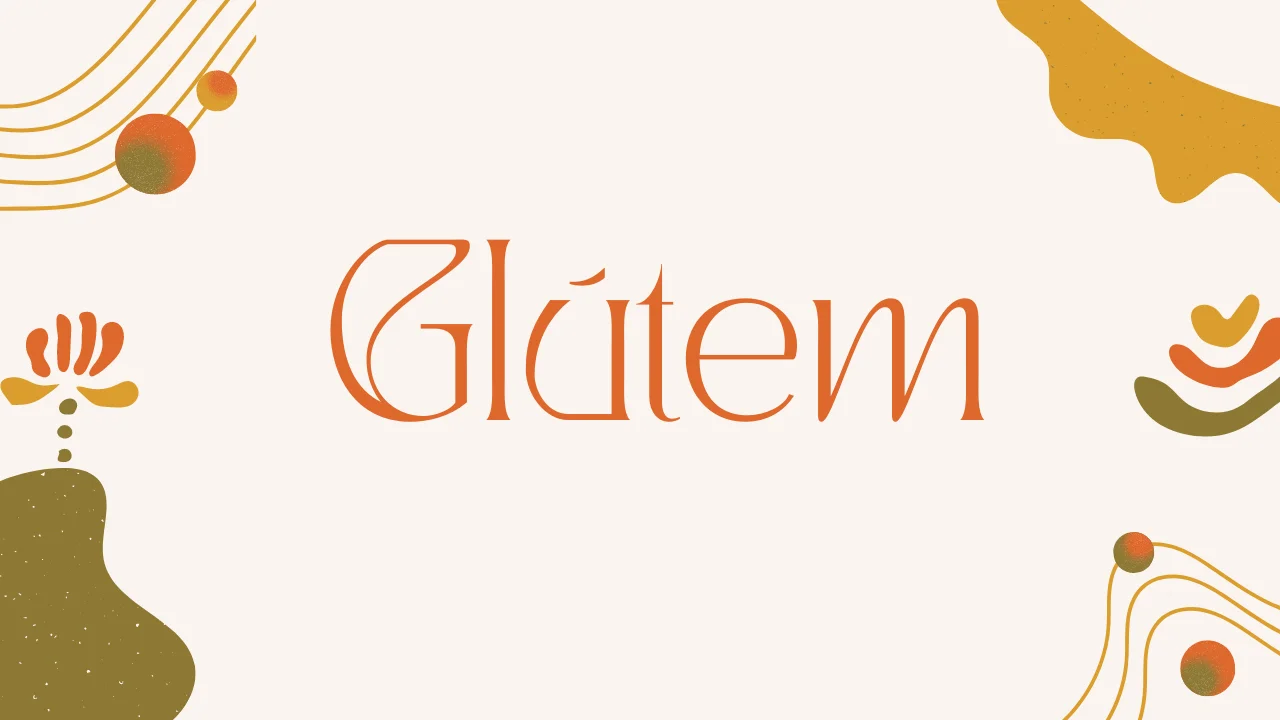Glútem, often known in the English-speaking world as gluten, is a protein complex that plays a crucial role in the culinary and nutritional properties of various grains. It is both celebrated for its unique functional properties and scrutinized for its health implications for certain individuals. This article delves into the world of glútem, exploring its nature, benefits, the challenges it poses for some, and the pathways to a balanced, gluten-aware lifestyle. Through expert insights and scientific consensus, we aim to provide a clear, authoritative, and engaging exploration of glútem, its impact, and how to navigate the dietary landscape it influences.
What is Glútem?
Glútem refers to a group of proteins found in wheat, barley, rye, and triticale. It acts as a binding agent, giving dough its elasticity and the ability to rise during baking. The main components of glútem, glutenin, and gliadin, are essential for the texture and structure of baked goods. However, for people with conditions like celiac disease or gluten sensitivity, glútem consumption can lead to serious health complications, necessitating a gluten-free diet.
Dual Nature of Glútem
Baking and Cooking
Glútem’s unique properties make it a cornerstone in baking and culinary arts. Its elasticity contributes to the light, airy texture of bread, while its moisture retention enhances the shelf life of baked products. Understanding glútem’s role opens up a world of culinary possibilities, from perfecting homemade bread to crafting delicate pastries.
Nutritional Aspects
Despite the challenges glútem poses for some, it is part of a nutritious diet for the majority of the population. Whole grains containing glútem offer essential nutrients, including fiber, vitamins, and minerals, contributing to a balanced diet and supporting overall health.
Health Conditions
Celiac disease and non-celiac gluten sensitivity are two primary conditions associated with glútem. These conditions require individuals to avoid glútem to prevent immune reactions and gastrointestinal distress, highlighting the importance of awareness and diagnosis.
Glútem-Free Diet
For those affected by glútem-related disorders, adopting a gluten-free diet is essential. This section provides guidance on managing dietary restrictions, ensuring nutritional balance, and enjoying a diverse, satisfying diet without glútem.
Alternatives and Innovations
The rise in awareness of glútem-related health issues has spurred innovation in gluten-free products. Today, consumers can enjoy a wide range of gluten-free alternatives, from bread and pasta to snacks and beers, making it easier than ever to maintain a gluten-free lifestyle without compromising on taste or variety.
Glútem Sensitivity and Celiac Disease

Symptoms and Diagnosis
Recognizing the symptoms of glútem sensitivity and celiac disease is the first step towards proper management. This subsection discusses common signs, the importance of accurate diagnosis, and the role of medical professionals in guiding individuals through the process.
Impact on Health
For those with glútem-related disorders, ingestion of glútem can lead to a range of health issues, from gastrointestinal distress to nutrient malabsorption. Understanding these impacts is crucial for managing health and mitigating risks associated with these conditions.
Glútem Sensitivity
Adapting to a glútem-free lifestyle can be challenging but is essential for those affected. Tips for avoiding cross-contamination, reading labels, and finding support networks are discussed to help individuals navigate their daily lives.
Treatment and Management
Recent research and advancements in the field offer hope for those affected by glútem-related conditions. This includes potential therapies, improved diagnostic methods, and an expanding market of gluten-free options.
Gluten-Free Grains
Quinoa, Corn, Rice, and Buckwheat
A gluten-free diet doesn’t mean compromising on variety or nutritional value. Grains like quinoa, corn, rice, and buckwheat offer excellent alternatives, each bringing its unique flavor and health benefits. Quinoa is renowned for its complete protein profile, corn for its fiber, rice for its versatility, and buckwheat for its rich mineral content. Incorporating these grains can lead to a balanced, nutritious diet that supports overall health.
Baking Techniques
Baking without gluten presents challenges, particularly in achieving the desired texture and structure in baked goods. This segment delves into innovative techniques and substitutes, such as xanthan gum and guar gum, which mimic gluten’s binding properties, enabling the creation of delightful, gluten-free baked products that rival their gluten-containing counterparts.
Gluten-Free Labels
Navigating food labels is crucial for those following a gluten-free diet. This section explains the significance of gluten-free certifications and labeling laws, helping consumers make informed choices and avoid accidental gluten exposure. It emphasizes the importance of vigilance in reading labels to ensure safety and compliance with dietary restrictions.
Preventing Gluten Cross-Contamination
For individuals with celiac disease or severe gluten sensitivity, even minute traces of gluten can trigger adverse reactions. This subsection provides practical tips for preventing cross-contamination in the kitchen, such as using separate cooking utensils and surfaces for gluten-free foods, to safeguard against unintended gluten ingestion.
Wheat-Free vs. Gluten-Free
The terms “wheat-free” and “gluten-free” are often used interchangeably, but there are distinct differences. This part clarifies that while all wheat-free products are inherently gluten-free, not all gluten-free products are wheat-free, providing guidance for individuals navigating these dietary needs to make accurate dietary choices.
The Future of Glútem-Free Living
The growing awareness and understanding of glútem-related health issues have led to greater acceptance and support for those on a gluten-free diet. Innovations in food science and technology continue to enhance the quality and variety of gluten-free products, promising a future where managing glútem sensitivity and celiac disease is easier and more enjoyable.
For Natural Ingrediant See: Are Natural Ingredients Beneficial for Your Hair?
Conclusion
Glútem plays a complex role in our diet and health, offering benefits to many while posing challenges for others. Through education, awareness, and innovation, individuals can navigate the world of glútem with confidence, whether they embrace it in their diet or follow a gluten-free lifestyle. As research progresses and awareness grows, the future looks bright for both the culinary applications of glútem and the management of glútem-related health conditions. By fostering an understanding of glútem’s impacts and exploring the vast array of alternatives available, we can all enjoy a healthier, more inclusive approach to eating and living.
